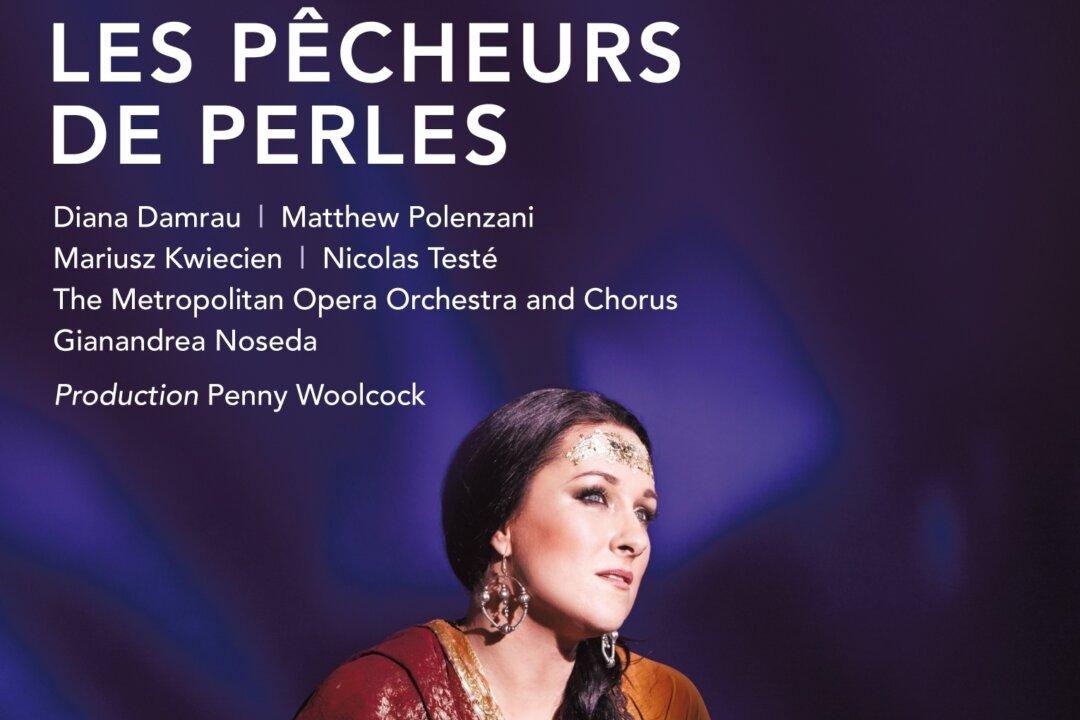While Bizet’s “Carmen” is one of the world’s most popular operas, “The Pearl Fishers” (“Les Pêcheurs de Perles”) on the other hand, had not until recently been done at the Met since 1916. Erato, a division of Warner Classics, has issued a DVD of the Jan. 16, 2016 Metropolitan Opera production of Georges Bizet’s rarely performed opera.
Director Penny Woolcock is primarily known for tackling provocative modern subjects, such as “Doctor Atomic” (which she directed at the Met) and “The Death of Klinghoffer,” as well as film documentaries about dog fighting and street gangs.
Here Woolcock proves she is equally inspired by an exotic setting (originally Ceylon, now Sri Lanka). As she explains in one of the extras on the DVD, she kept the Far East setting but moved the time period from the ancient era to the present day.
The opera begins magically with the sight of pearl fishers swimming behind a scrim—actually three dancers on wires with video projections. The sea is an omnipresent force throughout.
The plot starts with the reunion of two fishermen, Nadir and Zurga, who had been friends since they were children. Zurga is the leader of the village and Nadir had been away for a year. They had both fallen in love with a Hindu priestess named Leila and vowed to relinquish their romantic inclinations.
According to village beliefs, only a virgin priestess can maintain the calm seas and keep divers safe. When Leila appears, albeit veiled, Nadir recognizes her and their mutual love is instantly rekindled.
Between acts, there is a projected image of a tsunami. The storm breaks out during the second act, and when high priest Nourabad discovers the lovers, he holds them responsible for the bad weather.
Zurga appears to be sympathetic until he removes Leila’s veil and realizes that Nadir has broken his vow. Zurga struggles with the thought that his former best friend and the woman he loved are about to be sacrificed, so to save them, he sets the village on fire. At the end, Nadir and Leila escape while Zurga remains to face the music.
The Performance







